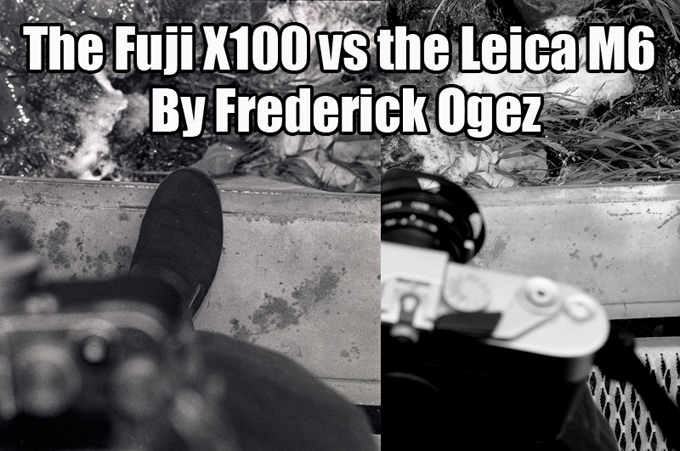
Working at a small family owned since camera shop in Minnesota, I was recently able to bring a copy of the Fuji X100 home for testing, and a wild idea popped into my head, my primary camera being a Leica M6… “What if I pitted these two wonderful cameras against each other? What would I find I liked and disliked about each, which would I find I liked better as a small concealable walk-around camera?”
Alright, let’s face it. These cameras can never really compete directly against the likes of each other. BUT let’s also face another fact. A used Leica M6 can be purchased for about the same price as a new X100, of course throw in a piece of Leica glass and your talking a difference, but this is undoubtedly a decision many are considering at this interesting time in photographic history as many are again calling for a pure photographic experience. My decision was made. The Leica was loaded and the Fuji was charged…
My first goal was to get the Fuji set up in a way that best fit my shooting style. I turned in-finder image review to off, the rear LCD to remain off unless in playback, and the battery saving auto-off feature to completely off. I was beginning to feel at home already! Next I held the “display” key until the camera went into silent mode. My jaw dropped. Fuji’s shutter actuation volume made my Leica sound like a revolver. Of course this is an exaggeration, but it is outstandingly quiet. If you are a fan of candid style photography, and would rather have your subjects remain in their natural state unknowing that you photographed them at all, you must try the Fuji in a shop. If it’s a bit noisy in there, you may need to press playback to see if a photo was made at all. It’s just that quiet, and much more so than a Leica M. I set out with both cameras strapped around my neck, photographing in my humble town of Forest Lake, MN. But so much for my suburbian Fargo accented small talk ey, let’s get down to sharing real world opinions. That’s what this here site is about der anyways don’t-cha-know?
One thing I found out about the Fuji right away was that manual focusing was not going to be an option. The optical viewfinder is gorgeous and bright, in my opinion a far superior experience to using the electronic one (something I would hardly use) but it can be quite difficult to see the information in bright light! The frame line remained fairly easy to see, but exposure information was difficult if not impossible for me to see, and most disappointing was not being able to see the color of the focus box. This is inside the frame line, and where you place the portion of the frame you want the camera to focus on. It turns green when an accurate focus is attained. One thing I noticed was that indoors, the Fuji did have a very difficult time focusing in certain situations, and that little square would quite often be red, indicating an unattained focus, and I would have to half press the shutter again, sometimes having to recompose to an area of the subject with higher contrast. Now to address the Leica’s finder…
A photographer friend of mine and I were once discussing this very topic, and he did say that when going out into the street he desired a finder that displayed shutter speed and aperture value, which of course my M6 does not show! I have blown this off as unnecessary. Pure necessities! Isn’t that what a camera should be? Two dials, one for shutter, one for aperture and you’re done. But I must admit, it was a welcome addition to be able to quickly fly from f/2 to f/8 or 1/1,000 to 1/30 and know exactly how far I had gone, all without taking my eye from the composition. I now realize that this can be invaluable in situations with varying light levels, and mean the difference between an intelligently exposed great photo, and a missed opportunity. That being said it seems that there is no experience quite like a manual focusing rangefinder experience. In darker situations where the Fuji sometimes took three tries for the auto focus to succeed, the Leica is easily focused in a fraction of a second with its consistently bright and easily viewable coincident rangefinder. For setting a zone of focus, the lenses are intricately engraved, giving you a precise and intuitive way of doing quick reportage style photography. This of course can be done with the Fuji, but to me the in viewfinder bar that indicates a distance from “here” to “here” on a LCD scale labeled either in meters or feet is simply less available, less intuitive and less clear then markings on the lens.
In the hand, both feel phenomenal. The Leica is significantly heavier, but this is expected from a camera that is designed to last a century (with incremental tune ups of course). Both (depending on attached lens) are very small, and even pocket-able, and both are quiet! But the Fuji is simply more quiet. Almost totally silent, and part of its silence is due to its lack needing to advance… Oh I almost forgot about that… The Leica is a film shooter!
Ok, I know I’ve mentioned the shutter many times already, but this is the last time. A quiet shutter doesn’t just mean low volume, it means an incredibly gentle shutter. Now the analog Leica M shutter is one of the best available in this category as well, but the Fuji is able to be hand held like almost nothing else. I’m serious that in my time with it I’ve gotten perfectly sharp results at ¼ of a second, and believe one could go further and get acceptable results…It was very responsive as well, with no noticeable lag between fully depressing the shutter button, and the actuation occurring. Both were able to be swung to the eye, quickly adjusted according to the bright lines, and capture the decisive moment.
The Fuji was such an enjoyable camera to use, and for certain purposes is better than the comparably priced M6. During this test, I loaded the Leica with Kodak TriX, and set the Fuji to ISO 400. After scanning the negatives with a Plustek Opticfilm scanner, and processing the color files from the Fuji to B+W to my liking, I realized one thing. Digital is simply not film. Sure I can add grain and other effects to create a film like look in Photoshop, but the rendition is quite simply different! Famous Leica photographer Ralph Gibson was asked in an interview whether or not he used digital equipment alongside film loading cameras. He said he had tried using digital cameras, and that his close relationship with Leica allowed him the opportunity to test new products. He went on with his personal opinion between the two forms of capture… “Digital photography is about another kind of information…When I’m taking a photograph I imagine the light rays passing through my lens and penetrating the emulsion of my film. And when I’m developing my film I imagine the emulsion swelling and softening and the little particles of silver tarnishing…Digital imaging and photography share similar symbiosis.
I think it’s a mutual coexistence situation. I don’t think they even compare.” He says some very strongly opinionated things besides these in the interview as well, but these are opinions none the less! I find some of his views quite harsh, as you can all see from this excerpt that he makes an implication that digital imaging is NOT photography! I must say that though I find much of his work beyond gorgeous, and his photographic mindset unique and wonderful, I do disagree with him there. But I do find it inarguable that an image created on film, is not like a digital image. They are just different, and each person is going to have a different opinion as to which one looks “better”.
That being said, these cameras are both a joy to shoot! Fuji deserves acknowledgement for doing something so brave as the X100, and shooting it gives a rewarding feeling, reminiscent of a prior time. But a Leica M, is simply a Leica M. Simple, stunning, lovely, ready for generations of use. Chemicals do cost money, and processing adds up. How about a decent scanner as well? Not inexpensive in the least, and expense is the precise reason the M9 is not mentioned until this point in this discussion. But the texture, the grain, the form, the gradation of tonal values… all is different between the two, and this must be a huge deciding factor when looking at the Fuji, and a film loading rangefinder. Personally, the look of Tri-X is enough for me to justify the expense of the chemicals, and I really find the entire film process rewarding to a great degree. But I want to hear opinions of others! Thank you so much for reading, and I hope to hear many replies and much healthy discussion.
Thanks again Steve,
Fred
–
[ad#Adsense Blog Sq Embed Image]

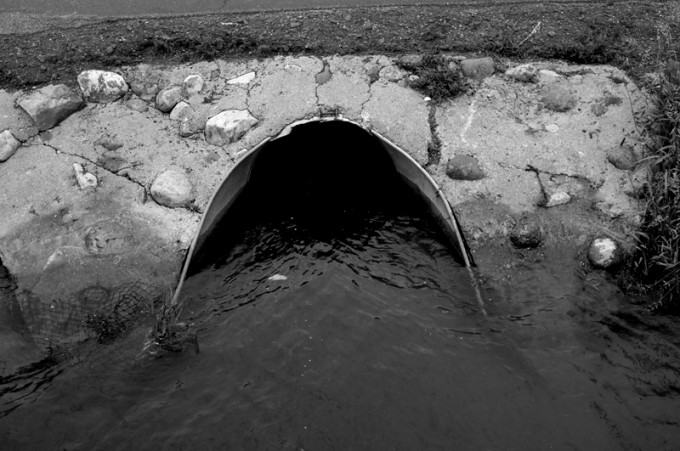
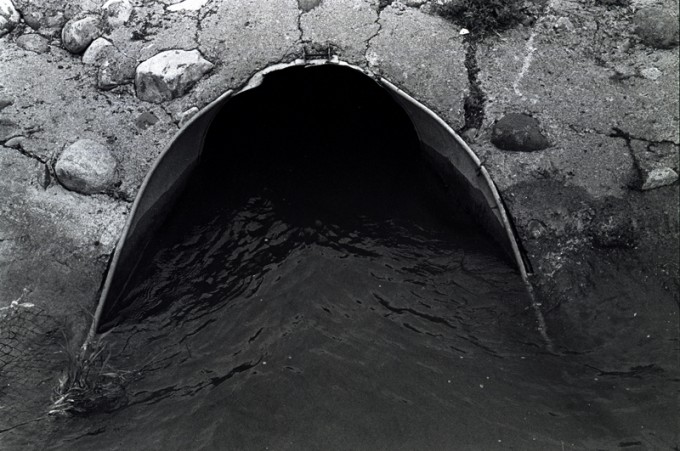
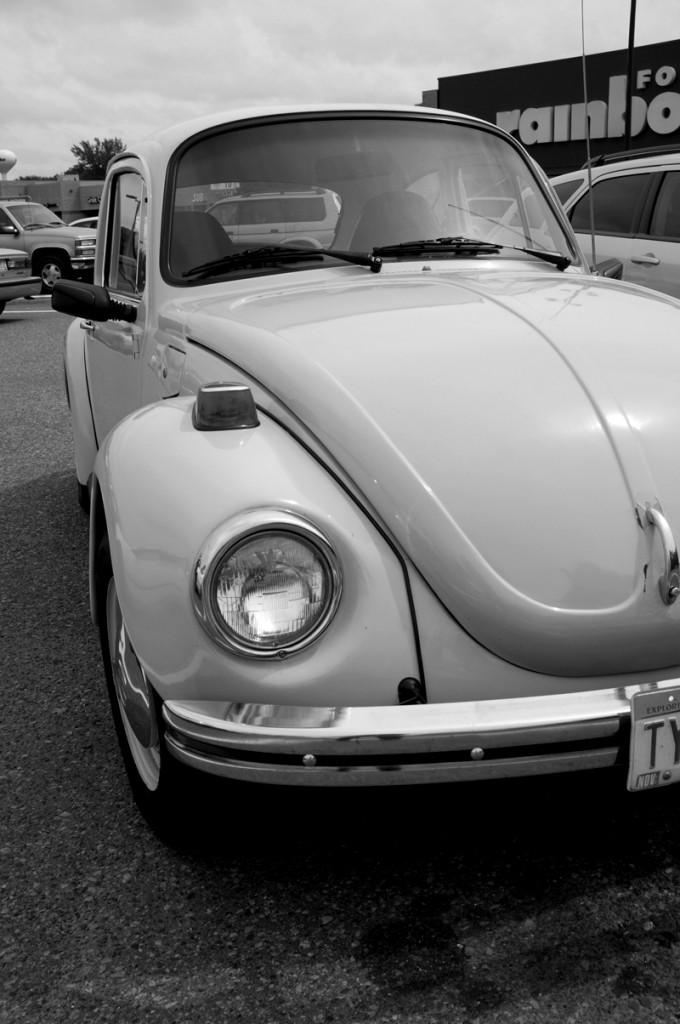
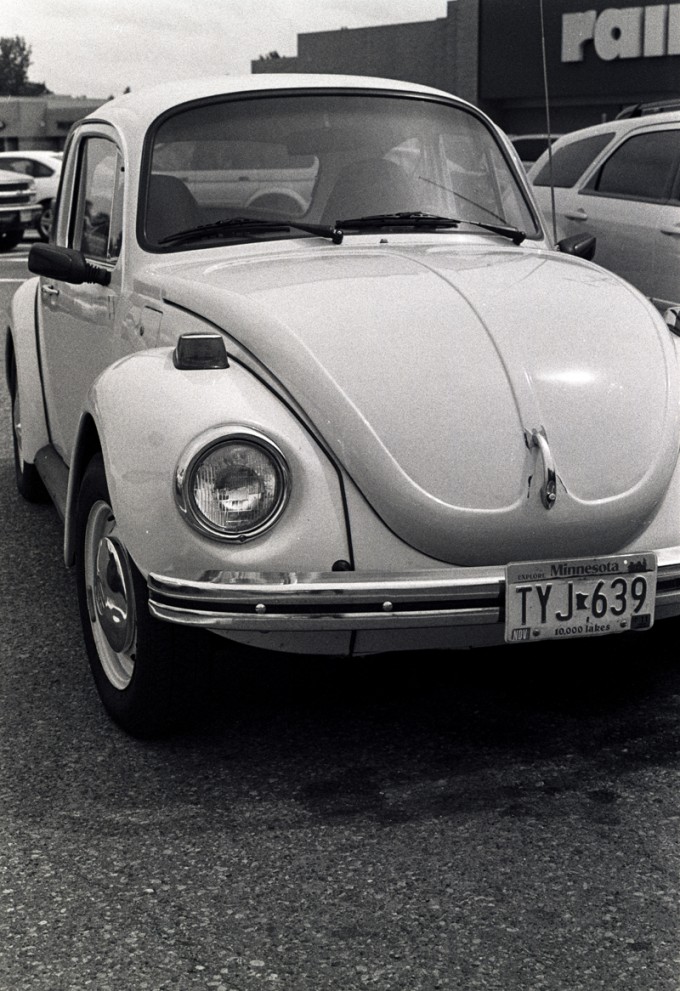
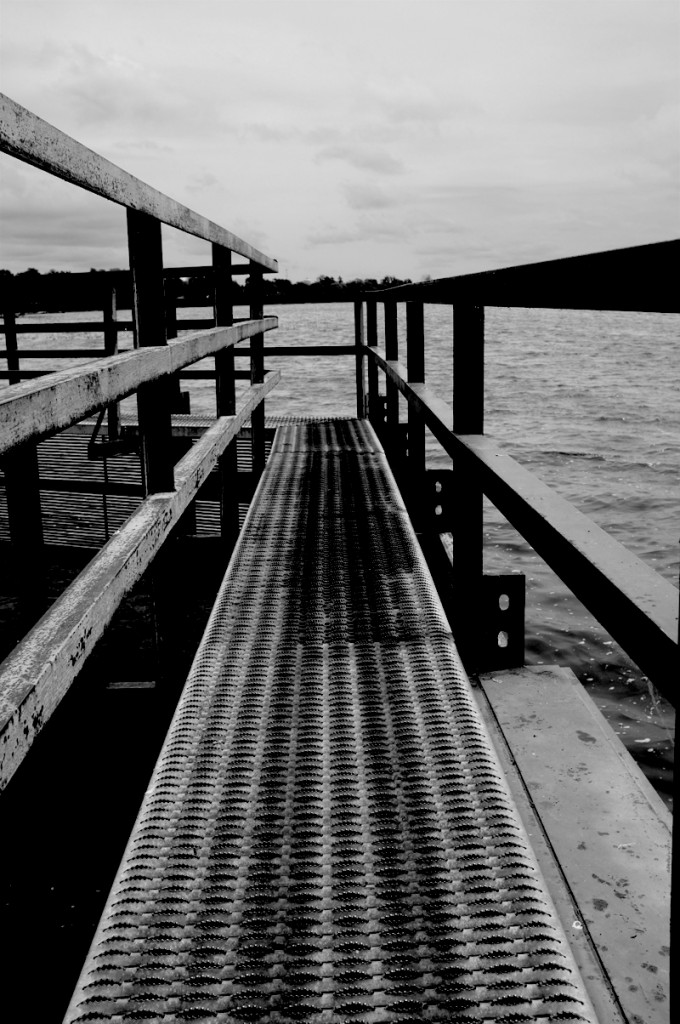
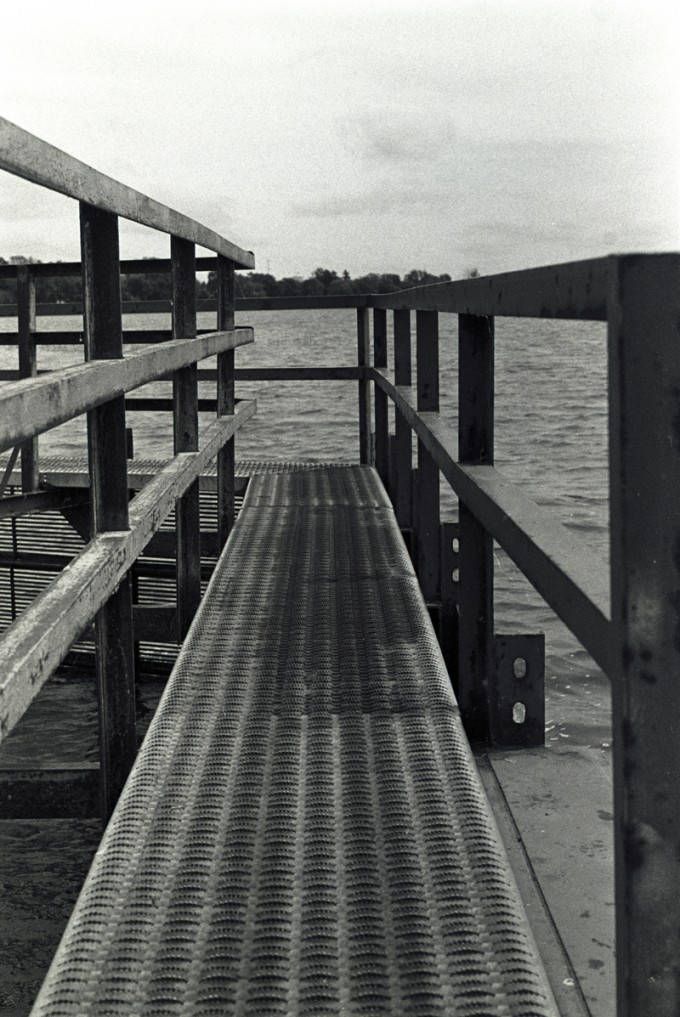
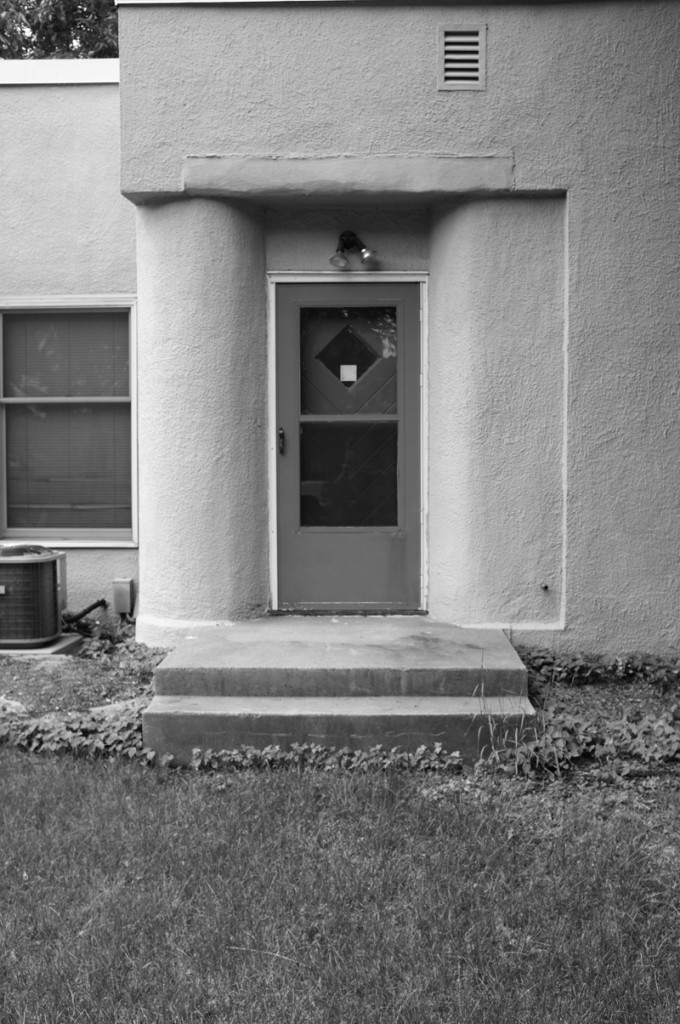
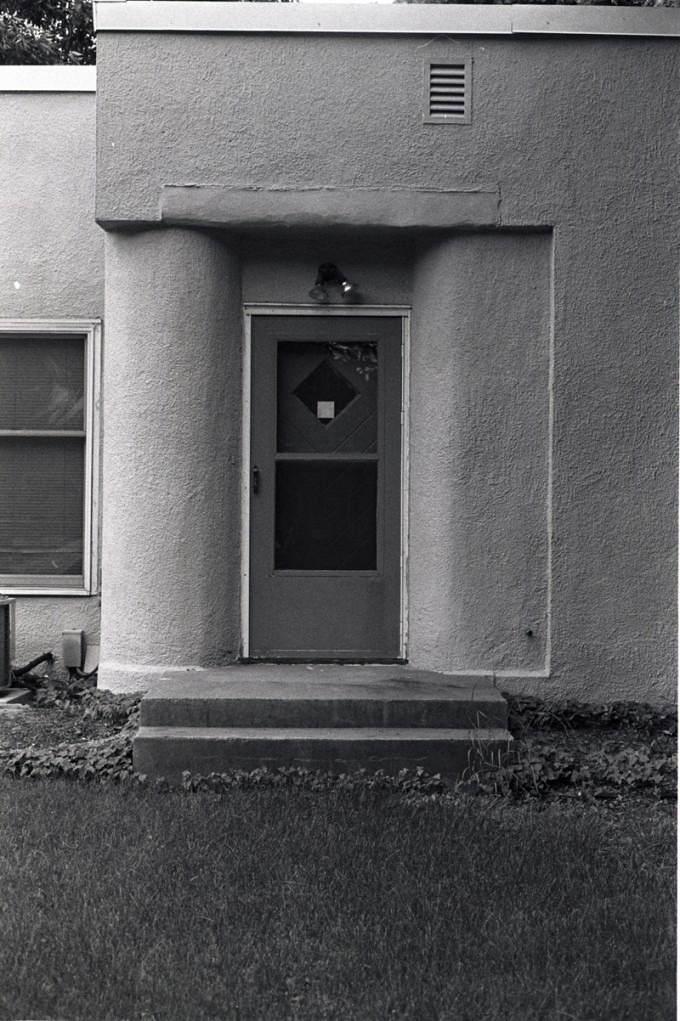
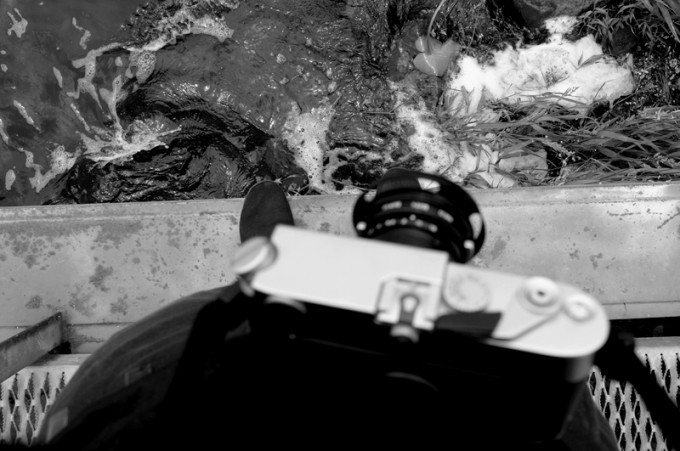
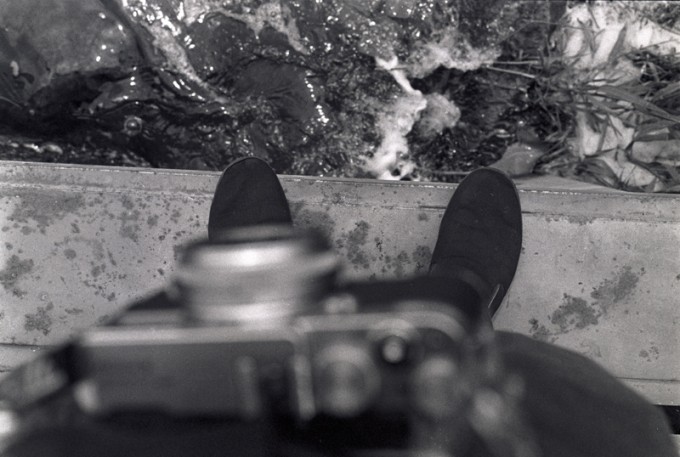
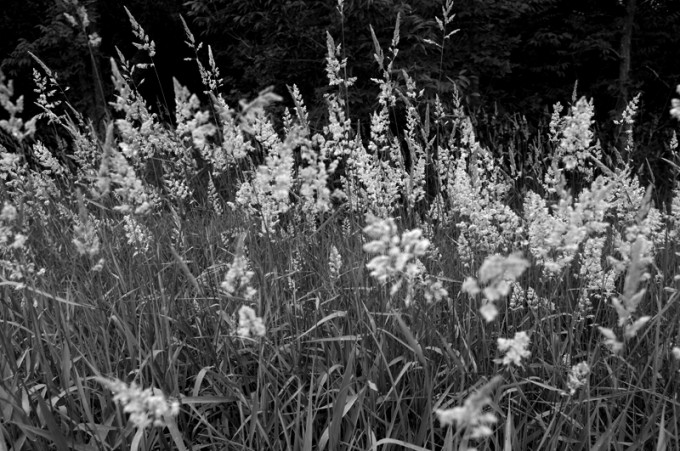
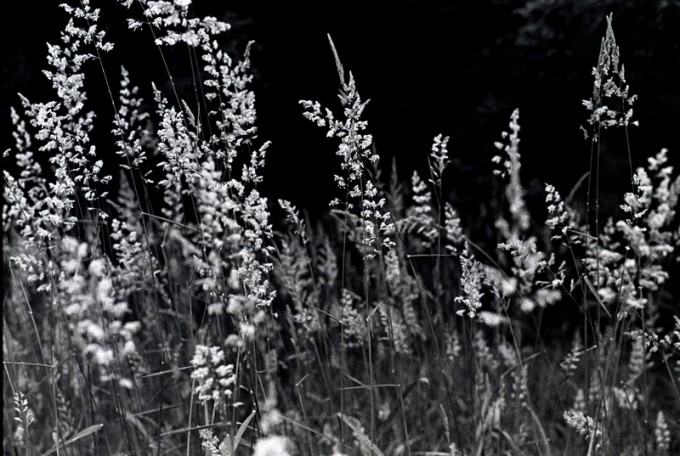
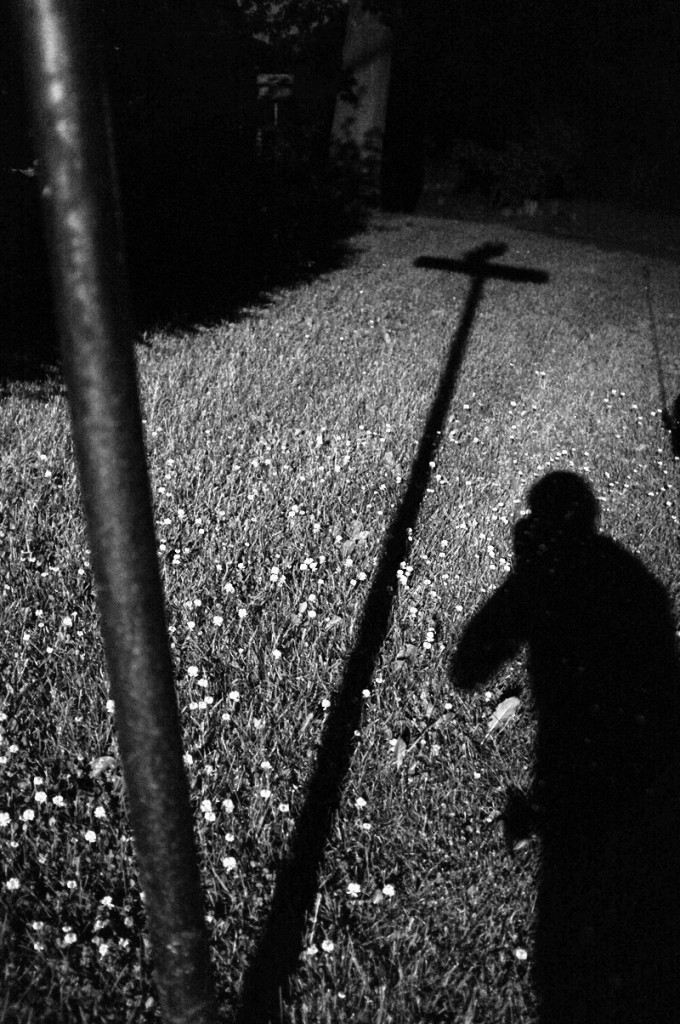
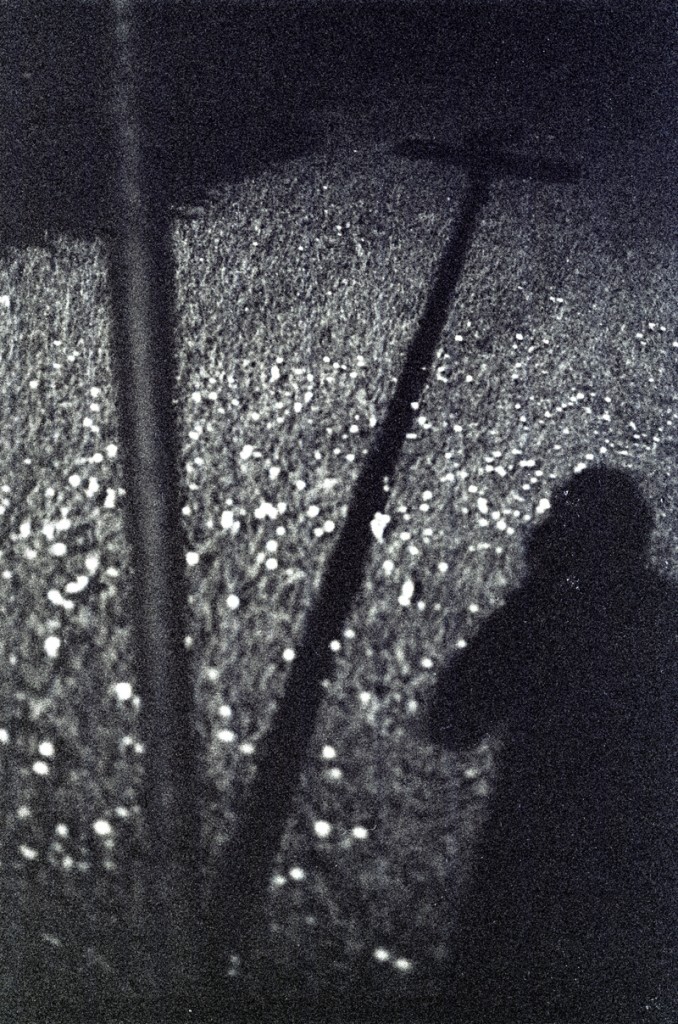

Nice review, but as you say, not really a Fuji vs Leica Film review. Since going digital 7 years ago I was a long time film person. Where digital can now beat the socks off of film from a technical perfection point of view, it just does not have, and will never have, that imperfect, but wonderful heart. I have often tried to analyse why film is still king and I believe it is because it has life and life isn’t perfect at all. I love digital black and white don’t get me wrong, but I am always striving to get it to look like film and especially like images from a film version of a Leica M with pre 1950s lenses.
what a beautiful comparison, unique and fun!
thank you mate!
Appreciate you taking the time to write this article, Fred. I’m actually in an interesting situation where I’m deciding between getting an M6 or an X100. With the imminent launch of the X-Pro1, the used market is suddenly flooded with mint X100. That makes a mint or almost mint X100 within the same price range of a used M6. I’ve been hunting for an M6 but I’m tempted to get an X100, especially if the X-Pro1 is going to be priced out of my budget.
I still can’t decide on which to get at the moment though.
I love articles like this, it’s a ‘user’ opinion piece that always seems to put some people’s passive-aggressive backs up . I love the X100, not because it replaces my M5 (and never could) but because the experience itself is fantastic. While the Leica is my ‘memories’ machine, the X100 is my visual notebook and the ability to carry around with me something so small yet with such great image quality that I can review and use to show others at a skip. This surely isn’t a bad thing.
The problem for many who read this seems to be that they see an article which appears to juxtapose two cameras, a declaration of love for one and so immediately assume that the other is seen in a lesser light.
You all that just complain please write an article. If Steve lets someone share his/her opinion just take it like that. It is an opinion and the expresion of someone. You don’t have to agree nor like the ideas expressed here. Some of you are being so rude and forgetting we are here to discuss about photography, not spelling. You really upset me.
Great review! I really enjoyed it.
I shoot both film and digital. I have owned various film cameras from Canon AE-1 to Konica Hexar and of course Yashica Electro 35. I have to say, X100 is the closest thing to a film rangefinder there ever was. Its got that vintage look, shinny but doesn’t draw much attention, people don’t normally give a damn when I point my camera at them. The image quality is superb(at least to me) and not to mention the excellent high iso performance.
Pick up my x100 after work then jump on the main street for a bit of walk-around has become my daily routine. I probably cant afford a leica and its lenses, but if I had to pick between film rangefinder and x100, I’d go with x100 in a heartbeat.
Just my 2 cents.
I have both the X100 and the M6, and I love both. But the X100 has an edge for when you are going out (see slideshow):
https://docs.google.com/leaf?id=0B1f8LlukAX8KZGVjNTdlNGMtYjQzNy00N2VlLWI0ZDctODc4OTJjY2M1NmM4&sort=name&layout=list&num=50
BTW if you are from Singapore or Thailand you might find one of the girls appear familiar — Ase Wang.
Thanks for the article. I like the idea, but I think this should be explored more with a better user analysis. I also had a hard time following the line of thought / writing…
I’m going to shut up now and just write an article myself…
I quite like the grass picture taken with the m6, because it feels a bit smoother.
What I found when going back to film is that I don’t have the luxury of messing about with millions of options. Life is already complicated as is, I don’t really need 100s of emulation algorithms in the camera.
i just can’t believe so many of the comments here… saying that the film images ‘breath’ that they are ‘3d’ (photography is bidimensional by the way) and a long etc, when they are seeing the images in a COMPUTER SCREEN. Jesus guys, get a hold of what you are saying! the leica images are scanned and processed and put in a computer screen, for gods sake, they look just grainy! what a bunch of snobs!
After a while I got tired of the dark room. I wanted to capture the world as I saw it, and I did not find the time in the dark room revarding. The photo had been taken, and if it wasn’t good, no dark room magic could save it. So in the early eighties I found other interesting things to do. Tri-X and D-76 might be nice, but it took away the time I wanted to spend phtographing.
I read this review in a different way than most of the other, is seems. The message I receive is that the technology, both “image capture vise” (sensors et cetera) and the mechanical aspects of the device, now finally has gotten to a point where I can continue where I left it 30 years ago.
A Nikon D700 is nice, but compared to the Cano9n FTb I used at that time it is HUGE. Now, with the X100, I might feel that technology has filled the gap.
Or, in other words, I liked the revie a lot.
Nice Article.
I shoot with an m6 as my primary cam these days and really really enjoy it.
That being said, if Fuji were able to sort out MF on the x200 with a similar setup as that new oly 12mm lens, I think they will get a few more purists buying them.
Nice personal comparison between two cameras!
I know the Fuji is silent and i really like the leveler inside the viewfinder and would like to have had this in my Nikon D700 as almost all my images tilt to the right, but the view shots i’ve taken in the store with the Fuji where all level! This is because i’m a lefty and don’t have that fine control in my right hand, soon i will try my left hand firing Mamiya Press and find out if that does the trick.
Advantages of the digital cameras is that they can project the frame lines in the viewfinder, as the older style cameras need the have light falling on the camera to project them.
Hope the next version of the Fuji will have a better manual focussing system and comes at a cheaper price as €1200 is way to pricey compared to $1200.
The nikon D700 has a “Virtual Horizon” which can be enabled by assigning it to the Fn-button. It works ok, but is not as pratical and good as the one in the Fuji X100. There is also a nice leveler in Live View which is quite usable when using a tripod.
As usual, a nice little post to stir up the natives on Steve Huff.com. 🙂
Thanks to Fred for putting the time and effort into shooting the images and writing up the post. Much appreciated.
I do have to agree with others that this is really a post processing exercise and to me, brings me to a big question.
There are very easy (if not over simplistic) comparisons to make between film and digital processing. You can compare out of camera JPEG to sending images out to a lab or digital PP (let’s call it lightroom for the sake of contrast) to the darkroom.
To excel in either the darkroom or the lightroom it takes skills that are separate and distinct from those used to capture the image in the field. As such, many focus their efforts in back of the camera instead of in-front of the screen or in the darkroom.
So what makes a great photographer? Is it someone who can take the most succinct and wonderful exposures but doesn’t know his or her way around post production or must we limit that title to someone that can do both equally well?
What if Ansel Adams had no darkroom experience but composed the same exact images that he so beautifully brought to life in the darkroom? Would we still herald him?
Ahhh – yet another comparison to good old Ansel Adams and his post processing…I never felt the comparisons are accurate or fair compared to the push button mentality many pros and amateurs alike resort to with Photoshop/Lightroom today.
And yes, we would still revere Adams as the master he was, regardless if his final prints were as impressive as some of them are/were.
Photography will always be about the person behind the lens than the technology that follows the firing of the shutter.
The point is that Ansel Adams had a vision when making exposures how the final print should look like so his work in the darkroom was just an additional step in realizing that vision, not something separate from taking the photo. There are oposite examples like Bresson or Erwitt or Allard and all three of them, in my opinion, helped photography to be established as an art form.
I think that phrases like: “Photography will always be about the person behind the lens than the technology that follows the firing of the shutter.” are a bit redundant or tautological. Offcourse that it is a matter of talent but also, like every art, there is an element of the craft in it and knowing how to use digital or real darkroom to help you achieve what you saw at the moment you clicked the shutter is equally important.
Ah yes…all this “vision” going around…please…many photographers of all ilks take this “vision” thing a little too seriously…everyone’s an artist…right.
People who use “vision” today are mainly those who can’t get what they want in camera and rely on Photoshop, pizza, and beer to finish their “creations”.
I mean, if you are a portrait photographer like myself, and I have a celebrity in front of me, the real photograph is to capture the smile, the smirk, a look or what ever makes that person unique. “Vision” has little to do with it. Avedon always said it was just about him and his subject. It doesn’t get any simpler than that. I could shoot Hugh Jackman with an OM-1, 50MM and some Portra and have something that I could be happy with.
When we as photographers get lost in the notion we need “vision” to make this thing happen, we embark on a forced artificial journey to “create something” (in post), which usually becomes redundant, insipid and common. So much for vision. Even Elton John once said in his prime that too many of his fellow artists took themselves and their work too seriously..and that’s from someone gifted with a ton of vision and talent.
I wish more people would just go out and shoot. Many get lost in the next body, lens, or action-du-jour. not to mention all the “me-too” seminars and workshops available…yes I’m big on education, but how many seminars does one need to learn to set up one light off camera right or left and just shoot?
Now, on the other hand, there are a few photographers with the artistic discipline to apply their “vision’ in what I feel is true art, not crap. David DuChemin is one. He uses Photoshop and Lightroom as true extensions of his work…but too many use it to mask either inferior exposures or lack of talent, or both. That is what my main rants are about.
Just my opinion.
Rob,
I disagree that the comparison is not valid. Absolutely, it is easy to “push buttons” but that doesn’t mean anyone can process at a high level of skill and proficiency – witness the myriad of processing train wrecks on Flickr. Just as anyone can enter the darkroom and develop a print but few have the skill to create the best work. For Ansel as well as the other great pioneers, processing was as important to the final image as the shutter click was.
The truth is, everything we capture is processed, whether it be film, JPEG, a converted RAW file, everything. If you prefer the lab or a JPEG engine, that’s fine but then you surrender such a critical piece of personal photography to someone else’s vision.
In my view, both the shutter and the darkroom are equal partners and it is not about the “technology that follows the shutter” but about the vision of the photographer that follows the shutter.
Chad – I have happily witnessed thousands of “Train Wrecks” on Flickr that are better than a lot of people who get paid to shoot.
The real train wreck to watch are the thousands of photography websites hosted by Blu Domain and others…just saying.
And, because I am always outspoken, I do want anyone reading this that I don’t consider my work the pinnacle of all things photography – more than half of what I shoot, sucks. But every once in a while we get a gem or two. 🙂
The negativity here is bit surprising. Now granted comparing an X100 to anything other than say a Sigma DP2 or Leica X1 IMHO is a bit unfair, the response to this article is a bit incredulous. Folks, Frederick may not have taken HCB level images, but what he did do is tell us of his experience using both cameras and how it made him feel. It’s not really a film vs digital article as so much as his journey to adapt the X100 to his preferred style of shooting.
If this were an article about how Frederick is Eugene Smith reborn, then yeah maybe we could discuss his technique a bit more, but it isn’t. It;s about Frederick choosing the X100 and seeing how he could integrate it to his style of shooting which he seems to have done happily.
“It’s not really a film vs digital article…”
Sandy – with all due respect, when you name an article as a comparison of the hottest digicam right now against what many believe is one of the greatest film cameras ever, it isn’t a stretch to invite the obvious digital vs. film comments, mine included.
I am a bit surprised at those of you who are…surprised, if truth be told. I believe Fredrick is a sharp cookie and knew exactly what response he would get after he titled this article as he did.
In my opinion, if he said “Successes shooting the new X100” and peeps chimed in about how a Leica and a film camera were better, then I would gravitate more towards your point.
Here we must disagree. Nothing Frederick wrote seemed to be about film vs digital, but more about the actual experience in handling the X100 vs the M6. He could have done the same with a Hexar AF and the M6 or the X100 vs a Sigma DP2 or the DP2 vs an M6 ad infinitum. In the end when you carefully read what he wrote he wasn’t comparing how Tri-X compared to the sensor, but how he got along operationally with the two. For instance his continued amazement of the quiet of the X100 in silent mode as compared to the M6. The same could have been said of the Hexar AF in stealth mode compared to the M6. Where in that observation by the author is a film vs digital debate? His discussion of the difficulty of focusing in low light with the X100 CDAF vs using a RF patch? The same can be said of the X100 vs an M9 or an Epson RD-1. Again where is the film vs digital debate?
Those that do use this article as a way to force a digital vs film debate frankly don’t get what the article is about and IMHO are better served reading DPReview, a site devoted to such inconsequential BS rather than Steve’s site that is more devoted IMHO to the philosophical and emotive side of photography. Just my two cents.
OK – I simply said his title of the article invites the comparisons, legit or not. I have no dog in this fight.
…except this is an over-hyped camera (X100) and we will be talking about something new in short order…
These articles are a bit of a joke really, comparing the x100 with the Leica x1, m8, m8 and now m6 — I’ve never seen one camera go under so much scrutiny!
But let’s face it, we all lap these articles up, and it’s just a bit of fun and a nice little insight to a photographers experience with a certain topic (in this case: film vs digital) – the reason why I bookmarked this site in the first place.
Yea, I agree…as smooth as Leica M’s are, at the end of the day, they just hold and advance film, nothing more. One of my best images so far are from a M3. But it was because of the Zeiss 50 2.0, not the “camera”.
Why is the last shot so grainy? If the Tri-X shot is properly exposed, developed and scanned it would have grain like that. Unless its ISO 3200 film or such.
The images in this article make me wonder if the photographer has any intent for the images. I shoot both digital and film (Tri-X 400, Delta 100/400, Porta 160/400NC). Should I shoot the same subject with both (not that rare) and choose to process both the negative and the RAW image I would end up with very similar shots. I would use both processes to try to achieve the photograph that I had in mind when I squeezed the shutter release.
Looking at the images above I don’t get it. Why is the dock image toned and low contrast on the Leica shot? Why is the Leica shot of the feet low contrast but the Fuji shot high contrast?
There is no “original” image coming from a camera, digital or film. The image needs to be processed and the photograher will have to decide what kind of an image he wants to create. A comparison of the cameras would be more interesting if the shots would convey the same idea/intent of image.
That’s an interesting comparaison ! Thanks for posting it !
For me there is no question what photos I prefer – the X 100!
The only Leica photo I think is superior is the “grass” one. But look at the Beetle: noise on the Leica one, not “desireable” grain.
The last “shadow” on by the Leica would have been deleted by me if it was digital.
I am quite new to photography after a 15 years break but became an fanatic quickly, walking nowhere without my camera, which is either a FZ 28 or a FZ 40/45 Lumix. At least the lenses have the Leica name on it.
In B&W my FZ 28 can easily match what I see here. The Fuji (I tried one out a couple of weeks ago) has very very good colors, sometimes superior to what I get out of my Lumixes, but then no zoom!
I am not too lazy to move but sometimes it is not possible so to get the best “frame” I need to zoom in or out. Maybe a X 200 is on the way?
Best regards
Heiner
A quick thanks for writing this. I think I would have to disagree with most of the above comments requesting more scientific comparison, different film stocks, and on and on. I would think that most people visiting this site are much like myself: amateur/hobbyist (ie. is not touring with Seal, a member of Magnum, or hosting workshops), use a Leica M, have shot film before, and have considered buying the Fuji but are concerned that it’s not going to live up to expectations.
Ergonomics and usability is what I’m concerned with. Your opinion holds some value for me because my primary camera is also a film M. I’m still not sure about the auto-focus features, but I won’t surely be able to tell until I try it for a couple of weeks myself.
Here is a great link at Zak Arias’ site about his view point about the X100.
http://zackarias.com/for-photographers/gear-gadgets/fuji-x100-review/
I include this because I think it illustrates the #1 reason to use a camera: that you LOVE it first, then the rest will come. Do I personally believe it will take better pictures (the way I shoot) than my 1973 OM-1? In some ways yes, but not to the tune of $1,100.00. But that’s not the point. Zak CAN’T WAIT to go out and use this camera – THAT is the critical part. Not that it is “nostalgic” or “Leica-like” for some. Likewise, many days, I can’t wait to shoot my OM-1 wide open with almost any film stock. That’s how I roll. I would love to use the X100, but I think there are many options available, regardless of sensor size. Wasn’t it just the other day the term APS-C sensor was derogatory, not an asset when describing a digital camera? Just saying…
Here are some links to images made right in camera with an Olympus Pen E-PL1. $499.00 No Photoshop, 98% straight out of the camera. I have not made prints yet, so I can’t say what a reasonable enlargement would be.
http://roboresteen.com/fineartprints/fa_plants_011.html
http://roboresteen.com/fineartprints/fa_plants_012.html
http://roboresteen.com/fineartprints/fa_plants_013.html
Surely it matters not one bit what camera a picture is shot on it’s the actual image that counts. Yes film is different to digital. B&W pictures shot On Tri X are awesome. Colour images shot on a current digital camera far out strip anything quality wise that was ever shot on colour negative film. The fact is unless you have hours to spare perfecting scanning or have the ability to print to a high standard digital is here to stay and nothing shown here proves otherwise and for most photographers is the way forward.
“Colour images shot on a current digital camera far out strip anything quality wise that was ever shot on colour negative film.”
It really depends on what you call “quality”. For me, there is nothing more beautiful in color photography than shooting Fuji 400 H @200. I reference Jose Villa or Elizabeth Messina for examples. Digital color is all over the map and at times suffers reproducing colors accurately, out of the camera. Try shooting purple flowers.
I do understand the initial lack of “noise” in a digital image could be construed as an improvement in quality, however, you never see an ad from Kodak or Fuji bragging that their particular emulsions have that “digital-like” quality. However, you do see a lot of plugin’s and tutorials for Photoshop bragging that they can help one achieve “film-like” quality.
It will be a debate I doubt will ever have a clear winner due to the fact “quality” is perception, not measurable fact. But when put up against trying conditions, full frame film (Kodak Ektar @100) can hold more detail and more accurately than a full frame digital sensor (Canon 5D). Check out “Twin Lens Life” for side by side comparisons.
For me (and most of my stuff is digital at this point), when I shoot digital portraits I can make nice and beautiful images – but they are flat to me. When I shoot with 35 or 120 film, there is an appearance of depth in the capture. My guess is a smoother and more complete rendition of tones and shadows.
But in the end we compare things on computer screens, not 16×20 prints, so in effect, everything has been dumbed down anyway.
Digital can be fantastic, but so can film.
I have seen several comparisons of M9 images and the same scenes captured with an M6 and Velvia 50 and there is really no comparison in my opinion. The M6 and Velvia is just so much nicer regarding color and the way the scene is rendered from highlights to darker areas of the picture.
I have tried the Velvia 50 with my Nikon 35Ti and the output is great compared to digital (in this case a Nikon d90 12MP) – a D700 or M9 may have been better than the d90, but would also have required some post processing where the Velvia is just scanned and looks very nice without any post processing.
True…
Frederick – again I’d like to thank you for your article, and also to express my disappointment at the nature of a number of negative comments that have come forth as a result of it. Everyone needs to really relax and understand that your comparison wasn’t intended to be a technical study, wasn’t intended to provide some key learnings to people who are seeking that, and doesn’t need higher res scans or better quality to be valid. In fact, it’s not a case of whether your comparison is even valid – it’s apples and oranges, and you were simply, and honestly, reflecting on your own experiences in playing with both cameras. Typos and all…who cares?…we don’t pay for a membership on this site, it’s not a professional association, these aren’t briefing notes for submission to the Senate. I think it’s a perfectly useful line of inquiry to say, “Hey…the M6 and the X100 are both pretty popular and different animals…what do their images and features kinda look like side-by-side?” No one should ever expect to come here, particularly for the public posts, and have some ‘revealing’ information that will promise guidance for their own decisions, necessarily tell them ‘something new’ or stand up to detailed technical scrutiny or MTF chart analysis. A friend of mine used to run a fashion blog, with information, opinion, musings, etc., and it always surprised her so much when the ‘haters’ showed up, asking her to defend what were essentially just thoughts – NOT claims. There’s a big difference. So don’t apologize for your article, it never claimed to be something it wasn’t, just a sharing of thoughts and experiences, and I thank you for it. And to all the ‘critics’ out there, relax. What’s next – criticizing someone because they talk about pictures taken in colour vs. B/W and some thoughts about that?
+1
I agree. I think it was an interesting article, not to be taken so seriously. It’s just something you decided to try out, and I thank you for it. I like reading stuff like this, as opposed to the usual boring reviews. It’s a personal story of something you tried and decided to share with it. I took it for what it was, a fun read. Thank you!
+2 🙂
+3
Long time ago, I used to scan my b&w films (Ilford essentially) with a Minolta Dimage Dual Scan.
I don’t know what quality you can expect from a scanner from Plustek, but when I’ve started digital photography with a Canon 10D, I’ve got more reliable results with it and ditched film+scanner combination (the camera used with film was a nikon FM3A).
My point is : you compare Fuji sensor to a combination of film and low or high, I don’t know, scanner quality, so the quality of the scanner could not be understated.
“quality of the scanner could not be understated.”
Absolutely – when a piece of film is scanned, nothing is added, just EXTRACTED from the emulsion. Hi-res scans of pro stock film can hold their own with FF digital images, maybe even better in some cases.
Film holds detail like crazy, period. When we see examples of film on line, we see the quality of the scan, not the inherent quality of the film image itself.
I’m not saying shoot film – digital is way easier and most eyes can’t tell the difference, especially when most images are rendered on laptop screens and smart phones anymore.
I am sincerely miffed at all the hype the X100 is getting. Guys, this cameras’ price is going to drop significantly in a year or so…nothing “Leica-like” in that respect.
Would someone do a fair comparison withe the Olympus Pens (new) and the Sonys?
some interesting fact that you may want to know. Included is an explanation about the difference between how film captures an image and how a sensor does it.
http://photorumors.com/2011/07/07/bringing-a-digital-camera-on-a-plane-kills-pixels/
Having some years ago owned a M6 for a short while and now owning the X100, I found this a really interesting article and thanks Steve for publishing it and to Frederick of course for putting pen to paper. Love the selection of comparison photos.
Any two cameras can be compared. That is the point in having choices based on one’s criteria for what they want. You can compare a point a shoot to a DSLR, you may not like it, but you have to on some level to know whats right for you. I don’t understand why some people say this is not a fair comparison, any true comparison is fair. Not all things can measure-up which is another story. I thought this was a good, fun and interesting article.
Thanks Fred
Seeing the same pictures from the two different cameras show the quality of both cameras with different results…cool!
+1 Agree!
Looking at the results, I couldn’t disagree more.
the writter of this article does know english unlike me, but this is not the point of this article , it is a comparison between two cameras that should not be compared whatever is written.
I got the feeling that all was about how the shutter sounds , true it is nice to have a quite shutter but,
1- love the M6 shutter sound and 2.- Is it really enough to write a whole article about shutter sound.
I was looking for a comparison between the two, as absurd as it is and never found one
Dan es que la unica ventaja que tenia una camara tan retrogada como las Leicas era su escaso sonido para un disparo discreto, todo eso se acabo con la llegada del silencio de Fuji X100, ya no merece la pena andar por hay con un bote relleno de transistores que no soporta la lluvia y es muy lento para todo.
….. de toda esta limitada comparativa lo que se desprende es que la FujiX100 es una autentica mataleicas
Ah sí, eso se desprende, sí. ¡Que tonteria!
Fuji, Rock, paper, scissor, Leica — Leica destroys everything.
Given the quality possible with digital cameras now, I don’t think there is anyway to justify the environmental effects caused by those harsh chemicals. Just sayin’….
The environmental impact for manufacture (chemical usage, lead, other carcinogens) of those chips, including image sensors, plus their planned obsolescence and disposal are worse and more than enough reason to ban digital cameras altogether. Let alone all those related lithium batteries which are also harmful to the environment and require strict disposal regulations.
A valid and honest point. Image quality can be defined in many different ways, but your comment is well taken.
just look at the photos and I found I prefer those from Leica
Fred this is an interesting article. You’ve made a practical, curious and fair comparison of the two imaging tools. I’ve come to the conclusion that for film (1) grain is beautiful and (2) there’s a significant amount of detail capture in the highlights and shadows. For example, I can almost make out some scribble on the post-it not in the middle of the door, and I can see the texture of the supports for the water walkway. In the x100 shots, details in the highlights are washed out or the shadow areas are clipped to black.
Your points here are great and valid! As an above user remarked though, I in no way claim these BW conversions to be all they could be.
What is the point of this review?
When all is said and done, to inspire conversation. =]
Shoot it with an M9, shoot it with an M3, put the prints side by side and make a pot of coffee.
We can’t make this comparison on the internet.
The scanner changes everything, and brings the film to the digital territory.
IMHO, film is more beautiful, but every day harder to use.
It’s wonderful that EVERYONE can express their enthusiasm for photography on this site..but my goodness, this article is all over the place. keep it simple and to the point…like a Leica.
Thanks!
Well taken Steve!
Fred
Pretty mediocre black&white conversion of the x100 pics, IMHO. Not exactly a good basis for any comparison.
Point is that it says that results from Leica are magical and that nothing comes even close, that is enough, wild imagination of fanboys will do the rest, just a small quote from one of the above comments as an illustration: “I can always tell the X100 from the Leica image purely based on it’s lack of 3D in the images.”
Have you really compared the images? Film ones breath! They are almost alive.
I love the pictures of my X100, raw and processed but sadly NOTHING comes close to that shit.
Yes, I am not Leica owner so I always try to compare images. The difference here mostly comes down to the B&W conversion of Fuji.
I do agree that film does have its charms. I bought recently Yashica 124g and I use it sometimes for landscape photography, it has very nice tonality but that is medium format and not 35mm film.
My point was not that film is not good but just that people have preconceptions and do not actually analyze what they see. Medium format film definitely gives nicer results than full frame digital cameras in terms of tonality, in terms of details I am not sure. Between 35mm film and full frame digital it is probably more or less draw in terms of tonality and exposure latitude if you know what you are doing with digital.
I enjoy this site but recently all the articles can be divided into 2 categories-1. Leica M digital is the best, all the rest digital full frame or other cameras don’t even come close and 2. Film is vastly superior to the rest without any kind of evidence and it is getting a bit too much. It is perfectly fine to say I think that Leica M9 is the best camera but then you are not a reviewer but just a fan or clever advertiser or a bit of both, which again, is perfectly OK.
I think it’s a matter of what you like, no matter what equipment is being used. Each has its pluses and minuses, depending on who you talk to at the moment. This is more of a fun website to share experiences, now tout about which camera is better, but we do get into it, don’t we? LOL! I like reading about other people’s views on their gear. but that’s me. I like the personal viewpoint. I don’t like a bunch of charts. I like real experiences, and why someone likes their gear, and being able to see the love in their work.
I think you folks are taking this whole thing way too seriously. I read it as purely tongue-in-cheek.
Agreed. Oh wait, is this still my post? I meant…um… they’re ok…
But seriously I dislike most of my own work. I don’t believe that photography is about liking your own work though, and least not for everyone. It’s about realizing from the work of others that there are beautiful moments in this world, and those moments are worth learning about. If we can attain a personal favorite way of capturing those moments, and then attain the skills to be able to repeat those results over and over until we die then it was worth it. And for many it may take until death to get there. It’s taking me a long time, and who knows if I’ll get there. =]
Nicely said. Do you maybe have a flickr account or any other place where it would be possible to see more or your work?
Frederick
I completely agree with you. When I look at some of my work I am very disappointed. It is not the picture that I saw. But I guess it’s a chance to revisit the shot and see what could have been done differently, and learn from it. Very occasionally, it does come together.
Seeing the work of others always gives me ideas though, and long may that continue.
Great review and comments! And the comparison pictures are among the first I’ve actually seen that show the same scenes on digital and film – again, one not better than the other, but the differences are very visible. I find this true of an M9 vs. M6 (or in my case an MP) as well, not just something like the Fuji (although both it and the M9 are magnificent machines!). Film rolls can be spoiled, causing one to lose pics…but SD cards also can have their own surprises as well, as we all know. What I like the most is that your review takes a ‘creation of the photograph’ view as opposed to either a competition, or a simple ‘advanced electronics vs. olde skool’ debate.
I’m so glad you enjoyed it, ignoring my poor writing abilities! There are benefits in both ways of capture. It seems inarguable that digital is very intriguing to anyone who has taken a photograph and then been sweating nervously in a pitch black room hoping so badly that the precious image is not marred in anyway before it reaches the enlarger.
So there’s a difference between digital and film shooting? Wow; now I’ve really learned something.
I wasn’t claiming to be teaching anyone anything, and I’m sorry if I offended anyone with this post.
It seems though that this is still a very interesting topic, at least to some. Ralph Gibson has strong opinions, and strong opinions are fun to share on a Saturday morning, along with some coffee to get things really fired up.
The examples above dont tell much. You are comparing two styles of postprocessing. A better comparison would have included depth-of-field / subject isolation and different types of film for the M6 (slide, b/w negative, professional color negative).
Totally agreed. As you can see (and I totally understand) a couple of the above readers probably would have left the site for good if I continued.
I’m simply obsessed with Leica, and enjoy very much to see the pictures of my heroes. In fact I was planning on going through Robert Frank’s “The Americans” again this morning before work. But this sounds like a job for Steve! Of course many things will greatly vary due to attached lens but a more intense review featuring color images would be wonderful.
I must as well say, that I wholeheartedly agree with Erwin Puts on this point; it must be printed! Too often today an image stops at the screen, and often necessarily so. The proof is in the print. I still believe that, and it is a similar discussion to film vs digital capture.
Love it!!!
Film shots look so much better in general. (At least completely different.) Digital looks like TV, no matter what we do, it can’t be taken as seriously as a film image. Just think of it as a Mexican soap opera versus a Hollywood movie: completely different tonality, image quality and motion – therefore different feel to them.
Does anybody feel the same?
Well you and Mr. Ralph Gibson are definitely on the same page!
Friend your opinion is a valid one, but I do believe that there have been many out of this world images captured digitally. When will I stop shooting film? When I can’t find it any longer. And given the number of 100ft rolls in my apartment right now, that isn’t happening anytime soon. =]
.
“..Does anybody feel the same?..”
No, I don’t. “..Digital looks like TV, no matter what we do, it can’t be taken as seriously as a film image”. I don’t understand. What kind of film are you comparing it with (Polaroid SX-70, Polaroid black-&-white negative, Tri-X black-&-white, Kodachrome, Fuji Velvia or what..?)
And in what way does, for example, a shot taken with a multi-megapixel Canon 5DMkII “..look like TV..”..? ..Fuzziness? insufficient colour depth? Lack of detail in highlights or in shadows?
Why can’t digital pictures be “..taken as seriously as a film image”?
Please explain – if you’d be so kind – Gabor..
Usted tiene mucha razon y es un placer leer sus logicos e inteligentes comentarios, parece que en este Blog acceden muchos que veneran lentes muy nitidas para que se vea muy grande el grano y no se por que tanto blanco y negro, no es una expresion de la realidad, el hombre diferencia los colores , perros no, o es por que Leicas no soportan Isos altos y asi maquillan sus defectos? A mi solo me gusta el grano de arroz.
Gabor salio corriendo a vender su camara de carrete, esta, espero no tarde y encuentre bobo que compra y vuelva pronto, te queremos Gabor.
Gabor – I’d like to agree that film is beautiful, video is not. And for many reasons this is so…
Though in reality that mindset is quickly becoming out-of-date as the technology improves, if not surpasses film. You’d be surprised how many “hollywood” movies are shot on digital these days, mate, even Roger Deakins, one of the all time greatest cinematographers has now completely jumped to digital.
Many great photos have been made with digital. However, there is a look to film. The Hollywood comparison is pertinent. After thirty years of video, video still doesn’t look as good as film. Technically it is better — faster frame rate, more resolution, more stable colors — but artistically, even after giving them decades to work out the kinks, film looks better.
We are still in the early days of digital vs. film for cameras. The real comparison didn’t start until digital matured around 2005. So, it’s been six years.
Other analog vs. digital comparisons are vinyl LPs vs. digital music, or maybe transistors vs. tubes. Even today, after thirty years, the LPs and tubes remain competitive, although the digital alternatives have been catching up.
That is very true. A well made Hollywood color film from the 50’th looks so much better than most digital movies in my opinion.
The same goes for digital TV versus analog. I got this old Pioneer analog HD (hard disk) recorder and I really like the smooth warm colors from it.
Hard to explain what the exact difference is, but it usually just looks nicer than the very clean and detailed output from my digital Pioneer recorder (DVB-T).
LP’s can be good, but also crap to listen to if the recording is not well made.
One problem with LP’s is that the quality fades when the pickup gets closer to the end of the recording (center of the LP). This is caused by the constant revolution speed. This is not a problem with CD’s that delivers a constant bit rate which ensures the same quality all the time.
I’m sure film can still be highly competitive in image quality, but unfortunately film is not so practical and it is very expensive too.
Just as an example, I could buy a Fuji X100 or around 100 Fuji Velvia ISO 50 films including processing for around the same price.
The film is only equivalent to about 3600 hundred shoots compared to the X100 which probably lasts at least 50.000 shots.
Mmmmmmm film. There is just really nothing like it….
I would have come here tonight saying I couldn’t agree more, had not my film back of my Leica CL fallen off today (I still don’t know what happened) after shooting street, dropping my film roll onto the pavement and losing all my pictures 🙁 Ok… I still agree. But ouch.
Oh no!!!!!
The CL is such a wonderful little M! I’ve so badly wanted one, and if I could afford to shoot both an M and it I would. One thing that keeps me a little nervous is that parts are getting more and more difficult to find.
Steve,
An edit for spelling on your guest posts please.
Tripping over mispelled words ruins the flow of an otherwise entertaining article!
Thanks,
Aaron
Sorry about that Aaron!
Tried to quick run through it but it seems I should have checked again.
Fred
I will put a spell on you prooffeessoor so watch out
Wake me up… Oh, the review is over?
Seriously, Steve, your site is better than this…
I apologize for you not finding it interesting. In fact, I hardly do myself!
Many people on this site have written much more potent articles, and I hardly consider myself worthy of a post here at all. Even Erwin Puts said that he in no way considers himself an artist, and many people dislike his writing style as well. But when reading his articles and seeing his photos you can feel his passion about Leica and photography.
Of course his knowledge which probably is greater than anyone else’s in the world when it comes to that company specifically, helps as well…This being here just shows Steve’s great humility. Thanks again.
Fred
Don’t apologise to someone so rude and clearly lacking any form of humanity. It may have been a tad pointless as you said, but I enjoyed the article nonetheless.
At least it got to Mr. Chav enough to have to post something in retaliation.
Dean, why so rude? Perhaps you should contribute something better to this forum? It’s easy to criticise but much more difficult to create something by yourself.
I would so like to ‘love’ the X100 images more than I do. Looking at the images on this and other postings, it seems an amazing image making piece of equipment. But, I can always tell the X100 from the Leica image purely based on it’s lack of 3D in the images. There’s perspective and then there’s 3D isolation as well and it’s present in spades with Leica and I hear Zeiss too. I have an X1 which has it even though it’s got those usual point-and-shoot-isms that can be annoying using the camera. For my money (and it is my money!) that 3D look takes precedence over ease of use.
So for me it isn’t just between film vs digital, it’s 3D or not. The M6 shots might not always compare in low light, but there’s that depth that takes priority for me. Just my 2 cents.
My x100 shoots in 4D. Leica can’t come close to the 4D isolation in my pics.
Mine shoots 5D mark II. Beat that, Leica.
Results – photographs from digital cameras are flat. It is reality, but it is important what you want and love.
The “3D” effect is about the lens, not if its a Leica or not.
You can put a Contax Zeiss lens, like the amazing 45mm f2 onto a Sony NEX and get some amazing “3D” effect. Its the glass, not the body behind it.
I’ve had quite a few Voigtander lenses I tried on my M9 that didn’t have any “pop” as at. Leica body isn’t going to do anything for a flat lens.
I will agree though that the X100 (which I just sold) doesn’t have the most pop. I’ve been shooting with a X1 some as well, and the 24 Elmarit does have a little more pop in some images. Not all the time, but sometimes, and when it does, it does give a little more of that “3D” look, microcontrast I guess, than the X100
Isn’t as simple as a Leica lens or body always having that pop though. Its lens dependent more than anything.
Sensor size, lenses quality, shooting aperture and the quality of light hitting your subject will all add up to draw an image in 3D….
My sensor size is 130MP. Hint, fuji velvia 50. Ken R. says the X100s with ‘velvia’ selection is much better color than X100, but film, ah..that’s different. Optics, I agree. I use to shoot Leica R till the set got nicked.
Sheena, are you absolutely sure you can tell the difference between shots made by X100 and Leica? I think not as it has been proven on this and other forums countless of times.
If you like 3D look then you should definitely get one of those brand new 3D cameras and a 3D TV for viewing the pictures. That is the real stuff compared to those
flat looking images from a normal camera.
Nice read, Frederick! I am not one to push digital vs film or vice versa but I have started shooting film again using a Yashica Electro35 GS and a Contax G2 while going back to primes on my “vintage” Nikon D2H. I find both enjoyable (digital for the ease of use; film for getting me to pay more attention and slow down) and will probably continue in this way for now. I am enjoying seeing film come out of the development process and for digital I have quit chimping. By not chimping, I get almost the same feeling about the images when I bring up Adobe Camera Raw and see all the small images. One is not better than the other; they are just different…
I completely agree. The RAW experience really does resemble the dark room experience in many ways! Very different looks, but both can be wonderful.